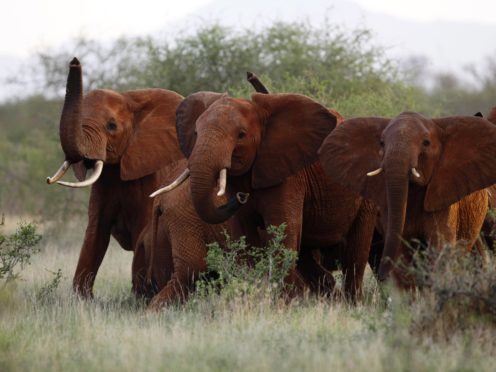The Trump administration has decided once again to allow Americans to import the body parts of African elephants shot for sport, despite presidential tweets decrying the practice as a “horror show”.
President Donald Trump personally intervened in November when the US Fish and Wildlife Service first said it would lift an Obama-era ban on elephants imported from Zimbabwe and Zambia.
Big-game trophy decision will be announced next week but will be very hard pressed to change my mind that this horror show in any way helps conservation of Elephants or any other animal.
— Donald J. Trump (@realDonaldTrump) November 19, 2017
The agency contends that encouraging wealthy big-game hunters to kill the threatened species would help raise money for conservation programs.
“Big-game trophy decision will be announced next week but will be very hard pressed to change my mind that this horror show in any way helps conservation of Elephants or any other animal,” Trump tweeted on November 19, placing the policy on hold after a public backlash to the earlier decision.
More than three months later, the federal agency overseen by Interior Secretary Ryan Zinke, issued a letter dated March 1 announcing that the importation of elephant trophies will now be approved on a “case-by-case basis”.
The letter cites a December ruling in a long-running lawsuit challenging the ban filed by Safari Club International and the lobbying arm of the National Rifle Association.
Mr Zinke recently told people privately that Mr Trump has called him several times to discuss what to do about elephant trophies. Nether the Interior Department nor Fish and Wildlife have issued a media release announcing the decision, which was quickly condemned by environmental advocates.
Their decision-making on elephant trophy imports needs to be in the public, not behind closed doors. And quite simply, elephants in the wild need to roam freely, and unencumbered from trophy hunts, ivory poaching, and the illegal trade that is driving their numbers downward. pic.twitter.com/DFUojX93SE
— Center for Bio Div (@CenterForBioDiv) March 6, 2018
“The Trump administration is trying to keep these crucial trophy import decisions behind closed doors, and that’s totally unacceptable,” said Tanya Sanerib, international legal director at the Centre for Biological Diversity.
“Elephants aren’t meant to be trophies, they’re meant to roam free.”
Trump’s two adult sons are trophy hunters. A photo of Donald Trump Jr holding a knife and the bloody severed tail of an elephant he reportedly killed in Zimbabwe in 2011 has sparked outrage among animal rights activists.
Mr Zinke is also an avid hunter who after arriving at the department last year ordered the arcade game “Big Buck Hunter Pro” to be installed in the employee cafeteria at the agency’s Washington headquarters, a move he said would promote wildlife and habitat conservation.

In June, the department removed longstanding protections for grizzly bears near Yellowstone National Park, a step to potentially allow them to be hunted. The Fish and Wildlife Service also quietly began issuing permits in October allowing African lions killed in Zimbabwe and Zambia to be imported. Previously, only wild lions killed in South Africa were eligible.
The world’s largest land mammal, the African elephant has been classified as threatened under the US Endangered Species Act since 1979. A licensed two-week African elephant hunt can cost more than 50,000 dollars (£36,000) per person, not including airfare, according to advertised rates.
Illicit demand for elephant ivory has led to devastating losses from illegal poaching as the natural habitat available for the animals to roam has also dwindled by more than half.
As a result, the number of African elephants has shrunk from about five million a century ago to about 400,000 remaining. And that number continues to decline each year.
According to the United Nations, as many as 100,000 African elephants were killed between 2010 and 2012. For forest elephants, the population declined by an estimated 62% between 2002 and 2011.
